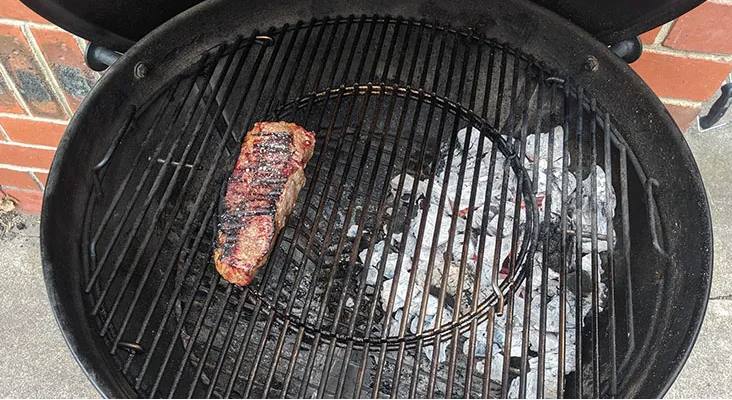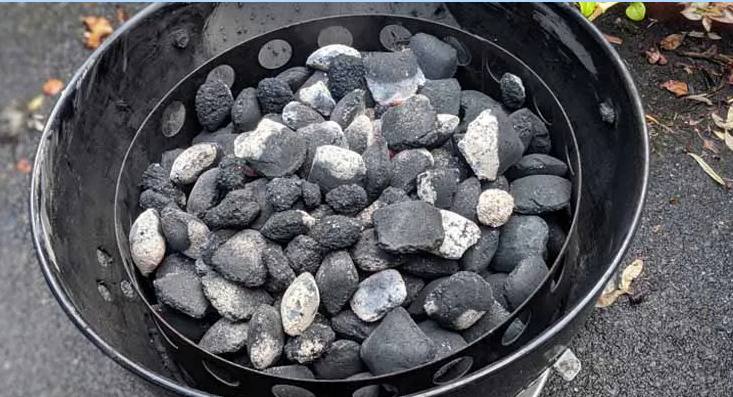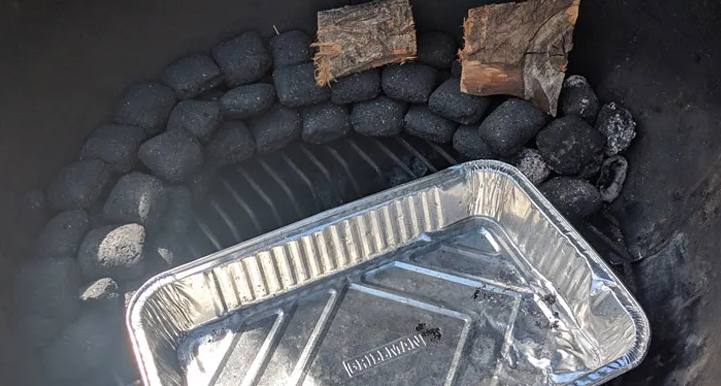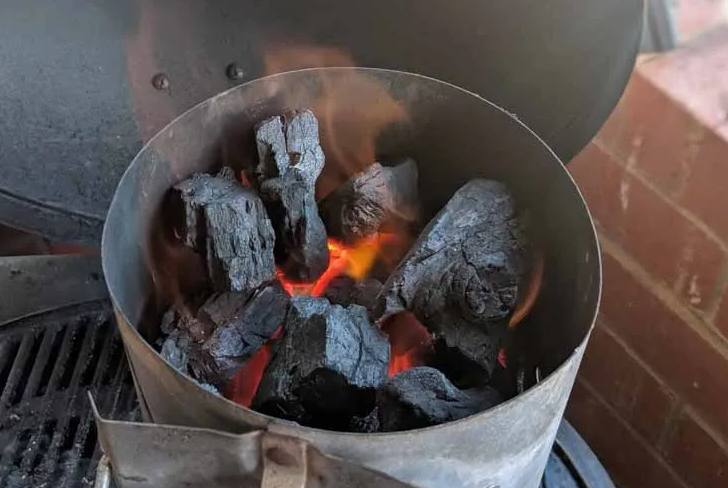Learning how much charcoal to use when firing up your grill or smoker is a vital skill to master.
Use too much charcoal and you’ll waste valuable fuel. Use too little and your grill will struggle to get hot enough or you won’t be able to maintain temperature until you are finished cooking.
How much charcoal do I need?
As with most things when it comes to grilling, how much charcoal you need depends on what you’re cooking and the type of grill you have.
Unfortunately, we can’t give you any hard and fast numbers because they might not work for your particular set up, but we can suggest some ways for you to lock in the correct ratios for yourself.
The first thing we suggest is getting a charcoal chimney. Not only is a charcoal chimney the best way to light your charcoal (more on that later), but they also act as a measuring device, of sorts, for how much charcoal you should be using.
How much charcoal to use when grilling
To figure out exactly how much charcoal you need in your hot zone, consider what you’re cooking and use your charcoal chimney.
Our favorite charcoal briquette company Kingsford recommends the following:
- For tender meats, like white fish, fill around a quarter of the chimney with charcoal.
- For burgers and sausages, try around half to three-quarters of a chimney for medium heat.
- If you’re using your grill to sear meat or want to cook something hot and fast, use three quarters or a full chimney.
Obviously, these are rough generalizations, and you’ll need a little experimentation to find the perfect ratios for your particular grill.
How to setup your charcoal
When it comes to grilling, we’re huge fans of the 2-zone cooking setup.
The 2-zone method gives you more control over your cooking space, allowing you finer temperature control and the ability to cook with direct and indirect heat. It also uses less fuel than traditional setups.
Creating a 2-zone cooking setup is easy.
All you do is heap up your charcoal on one side of your grill. This creates the ‘hot zone’ on which you cook with direct heat. The other side of your grill is the ‘cool zone’ that cooks with indirect heat.

The 2-zone cooking method is excellent for situations where you need to get a good sear on a piece of meat, but a constant high heat isn’t suitable for the entire cooking process.
For instance, a chunky tomahawk steak needs a good sear on the outside, but its thickness means that cooking it over very high heat will either burn the exterior or leave the center uncooked.
Using the 2-zone method, you can do the majority of the cooking over indirect heat, getting it to just shy of that perfect medium-rare before searing it to a finish on the hot side, in what’s called the reverse sear method.
How much charcoal to use when smoking
Smoking is a very different beast than grilling and requires a different setup and varying amounts of charcoal.
There are two main types of smoking:
- low and slow – What most barbecue recipes use, around 225-250ºF.
- hot and fast – Anything above 325°F, often used when cooking poultry.
Low and Slow
The right amount of charcoal to use depends on the type of smoker you are using, and how you set it up.
One of the best methods for setting up a charcoal smoker is the minion method.
This is ideal for low and slow cooks between 6 – 18 hours.
This involves filling the charcoal ring with unlit briquettes, and then lighting a small number of briquettes (around 20), and pouring them over the top.
This method is great because the temperature will slowly rise (while you are getting everything else ready), and you can dial in the temperature with the air vents.
Once your temperature has stabilized, you can run all day (or night) without much fiddling.

If you are using a classic Kettle style grill, the charcoal snake method is a great alternative setup.
This involves placing a double semicircle of charcoal briquettes around the inside of your smoker, creating a line of charcoal two briquettes deep, and two wide.

You then place your wood chunks on top of the charcoal and light one end of the snake using briquets started in your chimney starter. The charcoal will burn along the line, keeping a low and steady temperature, ideal for smoking.
Hot and Fast
Hot and fast smoking cooks the food at a temperature between 275 – 350°F (135 – 175°C) while imparting a smoky flavor. Unlike low and slow cooking, you’ll need to get your smoker raging hot with a full chimney hot coals and then use the vents and air regulators to keep a steady temperature.
This combination of high heat and short cooking time can leave you with a lot of partially burned coals. The good news is, there’s no reason you can’t reuse them.
Does the type of charcoal affect how much you should use?
We’ve already done a deep dive into the difference between lump wood charcoal and briquettes, but, to give you the run down, lump wood charcoal has fewer additives, which some claim can flavor your food, but it burns less consistently.
By comparison, briquettes can contain additives like cornstarch, borax, limestone, and they do produce more ash, but they burn more consistently and are cheaper than lump charcoal.
If you’re using lump charcoal made from hardwood like pine, you can expect it to burn hot and fast but burn out faster as well.
The best way to light your charcoal
As we mentioned earlier, not only is a charcoal chimney the best way to measure your charcoal, its also the best way to light it.

We’ve got a full step-by-step guide to how to use a charcoal chimney starter, but it’s as simple as filling your chimney with coals, placing it over some non-petroleum fire starter, and letting airflow do the rest.
Using a chimney starter, your coals can be lit and ready to cook in as little as 15-minutes.
Wrapping it all up
Everyone’s cooking setup if different, and finding the right amount of charcoal to power yours is going to take a little trial and error. However, using our advice and a chimney charcoal starter, you should be well on your way to finding the right ratio for you.
Do you have any suggested charcoal amounts for different types of cooking, or maybe a perfect setup for a particular grill or smoker? We’d love to hear about it in the comments section below.